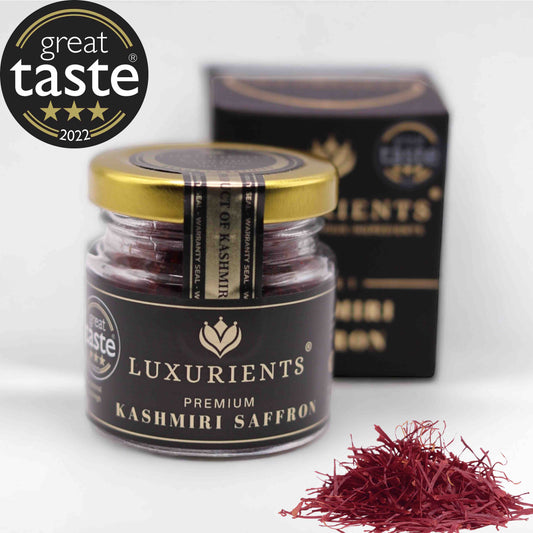Measuring and checking the quality of saffron involves a combination of sensory evaluation, visual inspection, and awareness of potential adulterants. Here's a step-by-step guide to help you measure and check the quality of saffron:
1. Visual Inspection:
- Colour: High-quality saffron should have deep crimson-red threads with slightly lighter ends. Avoid saffron that looks too bright or has an orange tint, as this might indicate lower quality or adulteration.
- Uniformity: Look for consistency in thread length and thickness. Genuine saffron usually has threads of similar size and colour, indicating a careful harvesting process.
2. Aroma Assessment:
- Aromatic Profile: Authentic saffron emits a distinct aroma that is floral, slightly sweet, and sometimes even earthy. If the saffron lacks a strong and noticeable aroma, it might be of lower quality.
3. Taste Test:
- Bitterness and Sweetness: Place a small amount of saffron threads on your tongue and taste it. Genuine saffron should have a slightly bitter taste, followed by a subtle earthy sweetness. This unique flavour combination is characteristic of real saffron.
4. Water Test:
- Colour Release: Place a few saffron threads in a small bowl of lukewarm water. Authentic saffron should gradually release a rich golden colour into the water, leaving the threads mostly intact. Be cautious if the colour leaches too quickly or the threads lose their colour significantly.
5. Packaging and Labelling:
- Transparent Information: Quality saffron is often packaged in small quantities due to its potency. Check the packaging for clear labelling that includes information about the saffron's origin, grade, and any certifications it might have.
6. Price Consideration:
- Reasonable Pricing: While saffron prices can vary based on origin and quality, extremely low prices should raise concerns. Authentic saffron is labor-intensive to produce, so suspiciously low prices might indicate an inferior or adulterated product.
7. Source Reliability:
- Reputable Sellers: Purchase saffron from reputable sources such as established spice shops, well-known brands, or direct sources like saffron farms. These sources are more likely to provide authentic saffron.
8. Adulteration Awareness:
- Common Adulterants: Be aware of common adulterants like dyed corn husks or safflower petals. These substances can be added to bulk up the weight of the saffron and mimic its appearance.
- Thread Appearance: Examine the threads closely. If they all look identical in size, shape, and colour, it could be a sign of a lower-quality product or adulteration.
9. Certification:
- Certified Products: Some saffron producers and brands provide certification of their product's quality. Look for saffron that has been tested and certified by reputable organisations.
10. Educate Yourself:
- Research Origins: Different regions produce saffron with distinct characteristics. Familiarise yourself with the saffron varieties produced in regions like Iran, Spain, and Kashmir, so you can better recognise their unique qualities.
In conclusion, measuring and checking the quality of saffron involves a multi-faceted approach that combines sensory assessment, packaging inspection, and knowledge of potential adulteration practices. By following these steps and relying on trusted sources, you can increase your chances of obtaining genuine, high-quality saffron that enriches your culinary experiences.
Luxurients is the brand based in the UK and serve customers round the world. Luxurients is a certified Saffron brand and has been awarded with highest rating during Great Taste annual awards in year 2022 in the London, UK. Luxurients only work with certified and registered grovers hence why the saffron is of very high quality.


